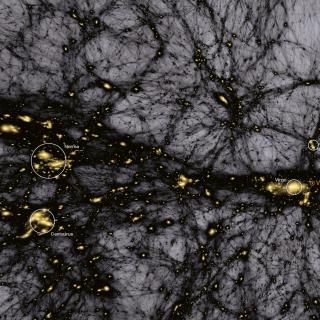Bibcode
Gao, Chong-Yu; López-Corredoira, Martín; Wei, Jun-Jie
Bibliographical reference
The Astrophysical Journal
Advertised on:
8
2024
Journal
Citations
2
Refereed citations
2
Description
Observations of large amounts of massive galaxies with relatively old populations found at high redshifts are challenging galaxy formation scenarios within the standard cosmology. Precise determinations of the average age of these galaxies would be useful for the discussion of this problem. Here we carry out a better constraint of the age of 200 V-shaped spectral energy distribution (SED) nonactive galactic nucleus galaxies at redshifts 2 < z < 4 of the catalog of the FourStar Galaxy Evolution Survey, identified by the V shape in their SED with a Lyman and a Balmer break. The SED fitting includes a main stellar population in addition to a residual younger population and extinction. The galaxies are younger at a higher redshift on average. However, for the galaxies with z > 2.5, we do not see a significant evolution of their average age, with all average ages of the galaxies mostly remaining between 1 and 2 Gyr. Our research finds that most massive galaxies (∼1010 M ⊙) are older (typically > ∼1 Gyr old) and formed earlier than less massive galaxies in our sample.
Related projects

Cosmology with Large Scale Structure Probes
The Cosmic Microwave Background (CMB) contains the statistical information about the early seeds of the structure formation in our Universe. Its natural counterpart in the local universe is the distribution of galaxies that arises as a result of gravitational growth of those primordial and small density fluctuations. The characterization of the
FRANCISCO SHU
KITAURA JOYANES